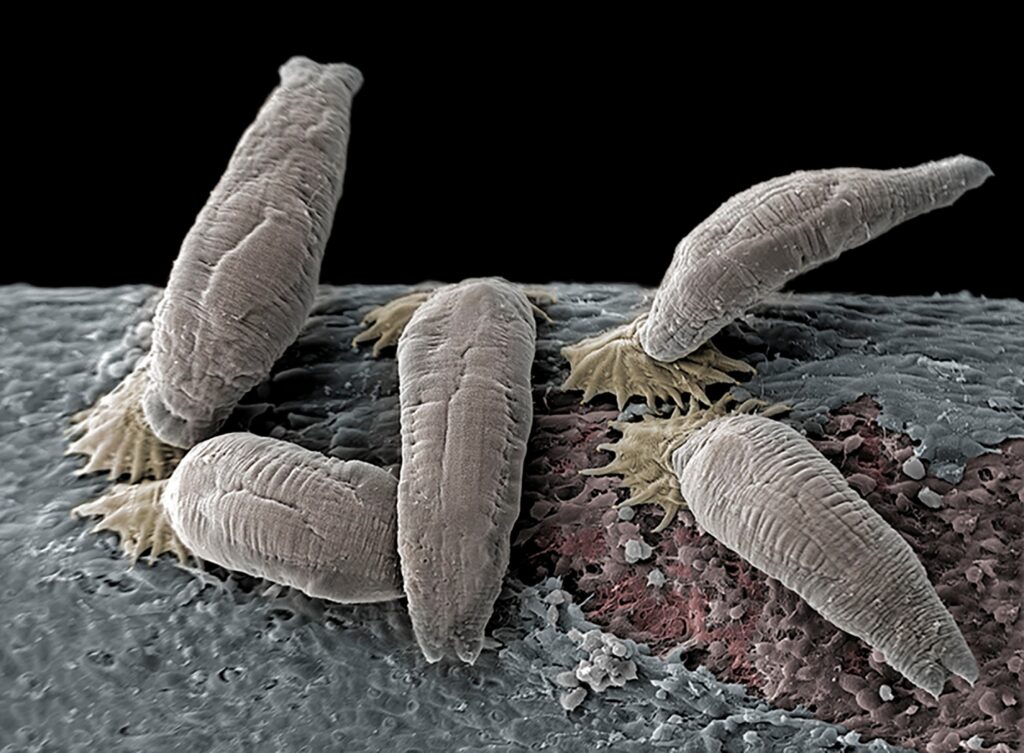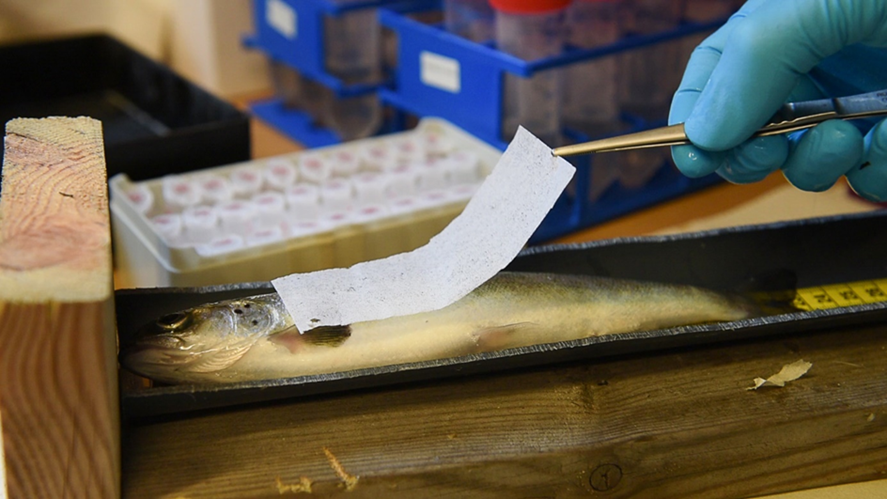Multi-Omics analysis for the differentiation of salmon fluke (Gyrodactylus salaris) susceptibility in Atlantic and Baltic salmon (Salmo salar)
Background
Salmon fluke (Gyrodactylus salaris) causes serious problems in wild Atlantic salmon in Norway. The freshwater ectoparasite feeds on the skin and fins of juvenile fish, causing large wounds. Infestation with several flukes is mostly deadly. Thus, salmon parr density in infected rivers is greatly reduced and leads ultimately to considerable population losses. Interestingly, Baltic salmon, a strain that remains for its whole life cycle in the Baltic Sea and the coastal rivers, is less affected by G. salaris. It has been previously shown in laboratory experiments that the initial infection with flukes is comparable in Atlantic and Baltic salmon, but that the numbers of parasites attached to Baltic salmon decreases after some time, allowing the fish to recover, whereas the numbers continually increase on the Atlantic salmon (Bakke et al., 2004).This difference has led to the assumption that Baltic salmon might possess non-sterile immunity providing a certain degree of protection against G. salaris.
Bakke et al. 2004. Susceptibility of Baltic and East Atlantic salmon Salmo salar stocks to Gyrodactylus salaris (Monogenea). Dis. Aquat. Organ. 58: 171-177.

Aims
In GyroOmics, skin mucus of Atlantic and Baltic salmon parr were analysed at 15 and 39 days after infection with G. salaris using proteomics and metabolomics with the aim of identifying proteins and metabolites that could be connected to the observed difference in parasite susceptibility. Additionally, skin epithelium was analysed by transcriptomics. Biostatistical multi-omics analysis will be applied in the search for significant differences between the salmon strains.
Funding: Norwegian Veterinary Institute
